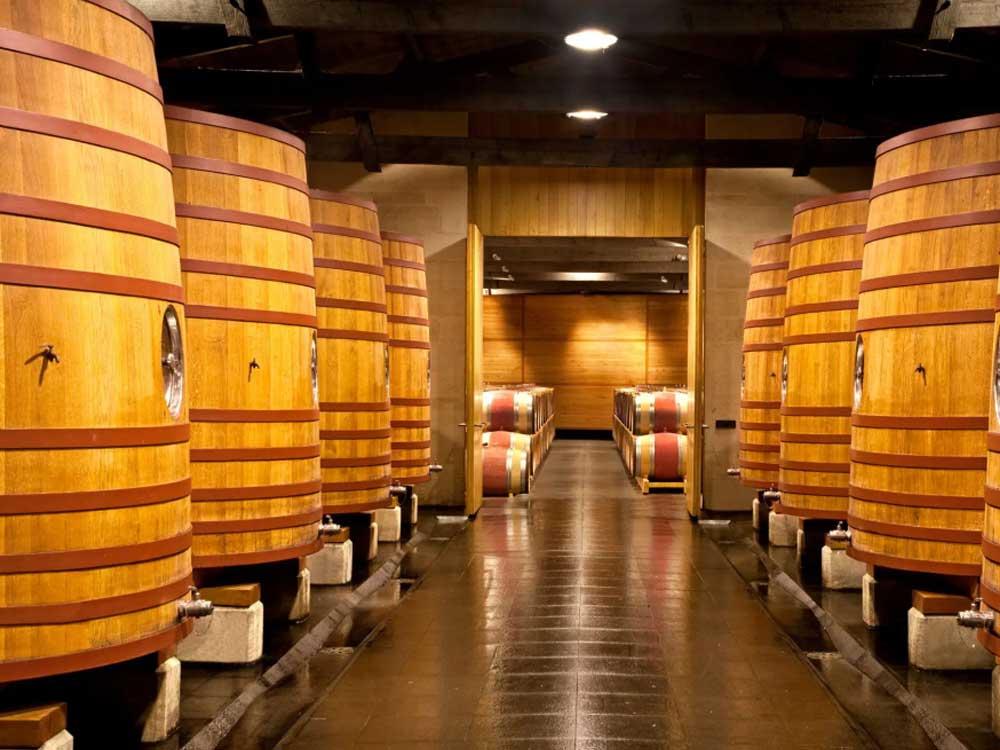We now have a few thousand liters of new make spirit. It is useful to note at this point that new make is basically just a charcoal (…diamond, crystal, whatever) filter away from being called single grain pot still vodka. The new make has to live in oak barrels for a minimum of 3 years (2 years in Australia) before it can legally be called whisky. This process is whisky maturation.
There is an old saying that the wood makes the whisky.
This is because the wood has the largest effect on the final result, lending 100% of the colour and between 60% – 70% of the flavor. The ageing environment has a great effect on the end result, though nobody is quite sure exactly how it works, but environmental factors such as temperature, sunlight, air pressure and humidity all have a role. One thing is certain though, no matter how good your new make might be, a bad barrel will make it undrinkable.
Oak is used for two reasons. Firstly oak is dense and so the barrels don’t leak and secondly when charred or “activated”, the wood imparts colour and lots of sweet, toasty characters to the liquid. There are two primary types of oak used, American or white oak (Quercus Alba) and European oak (Quercus Robur).
American oak is a fast growing type of oak found in North America and is very popular for Bourbon maturation. The wood has a high vanillin content that is quite easy to pick up in whisky that has been matured in these barrels. Bourbon has to be matured in virgin oak barrels, which means that they cannot have held another alcoholic beverage previously, while the rest of the world prefers barrels that have been used before. Therefore a huge amount of ex-bourbon American oak barrels find their way to Scotland and you will have noticed that the majority of Scotch is matured in ex-bourbon barrels.
The European oak used to mature whisky was most often used previously for fortified wine, either sherry or port. The UK is the biggest consumer of sherry in the world and for years sherry was shipped to the UK in barrels. These barrels then found their way to Scotland where they were put to very good use maturing whisky. Nowadays there is such a huge demand for sherry barrels that some Spanish wine makers make sherry purely for conditioning whisky barrels. Fortified wine like sherry and port impart a gorgeous, fruity sweetness to the spirit.

Barrels are charred to “activate” the wood and charring can vary from a light char to heavy “crocodile skin” charring. The charred wood acts as a filter that makes the liquid purer and smoother over the years. The charring also caramelises sugars remnant in the wood from previous fills, again adding complexity to the new make spirit.
Barrels are used over and again. A new barrel, that is to say a barrel that is holding single malt for the first time (but may have held port, bourbon, whatever previously), is called a first fill barrel and has the most profound effect on the new make because there is still a lot of the original liquid remnant in the barrel. This leaches into the new make, giving it colour and flavour.
A barrel used for the second time is known and a second fill barrel and has less of an effect until finally we get to refill barrels, which are barrels that have been used so many times that they no longer impart any of the original characteristics. These barrels are generally used for the first period of maturation, normally around 8 years and then the whisky is “finished” in a fresh cask for a short period to give it some extra flavour. All manner of barrels can be used for finishing and it is not unusual to see port, sherry, madeira, muscat, rum and cognac casks being used.
Finally, the size of a barrel also plays a role in determining the outcome. Generally smaller barrels mature whisky a lot faster than large barrels. This is because there is a greater wood to liquid ratio in small barrels, meaning that the liquid is in contact with a lot more wood than in a larger cask. A quarter cask (100l barrel) generally matures in 3 to 6 years, while a 200l Bourbon barrel takes 8 to 10 years.
If you are looking for the distill, please feel free to contact with us. Tiantai company not only provide you beer brewing system, but also distillery system. If you plan to brew craft beer and distill at the same time, it’s no problem for Tiantai brewhouse, beer fermentation tank. We also can customize the distill pot accordingly. Warmly welcome your proposal!
Edited By Daisy
[email protected]



.jpg)


Get In Touch